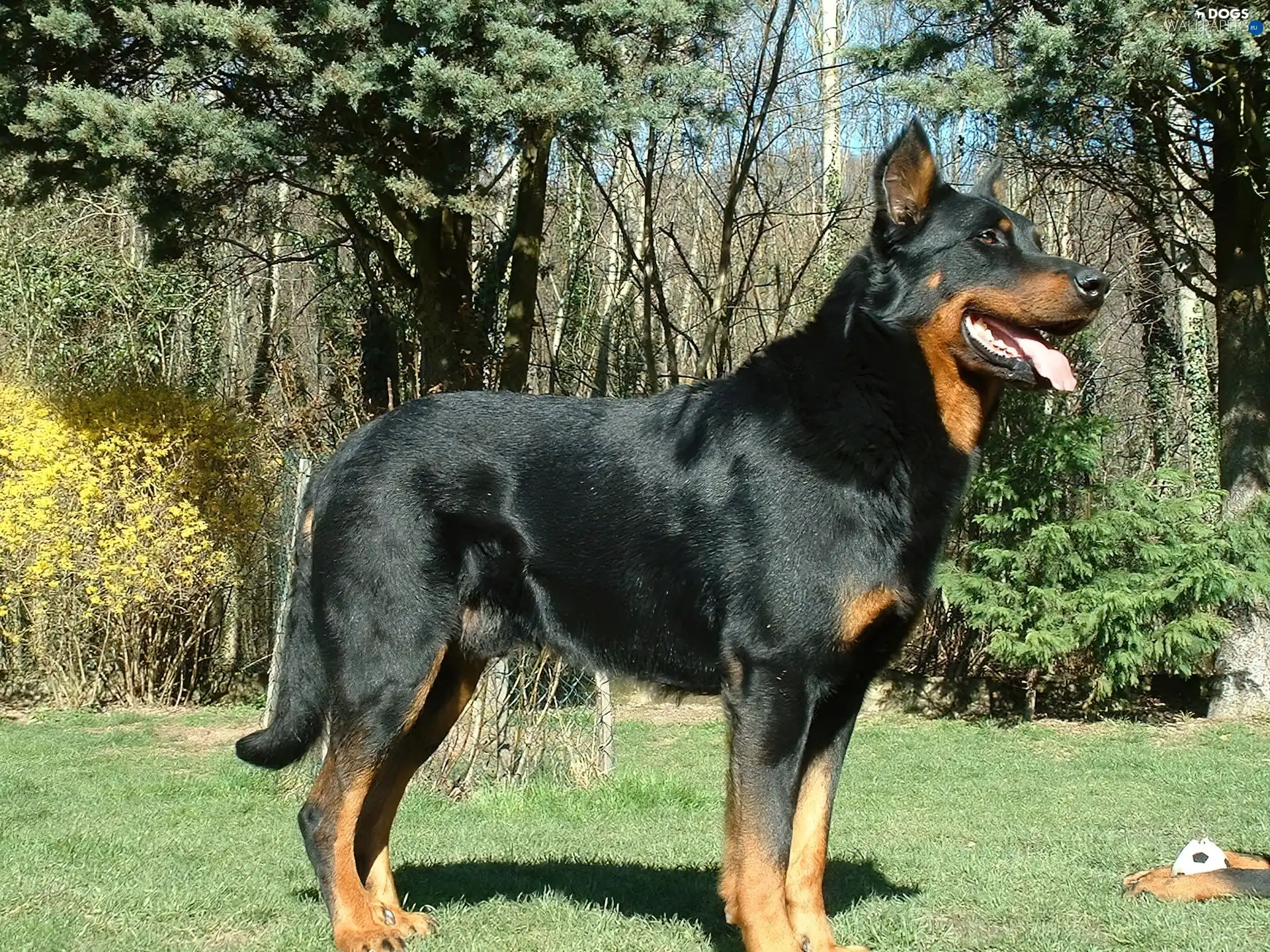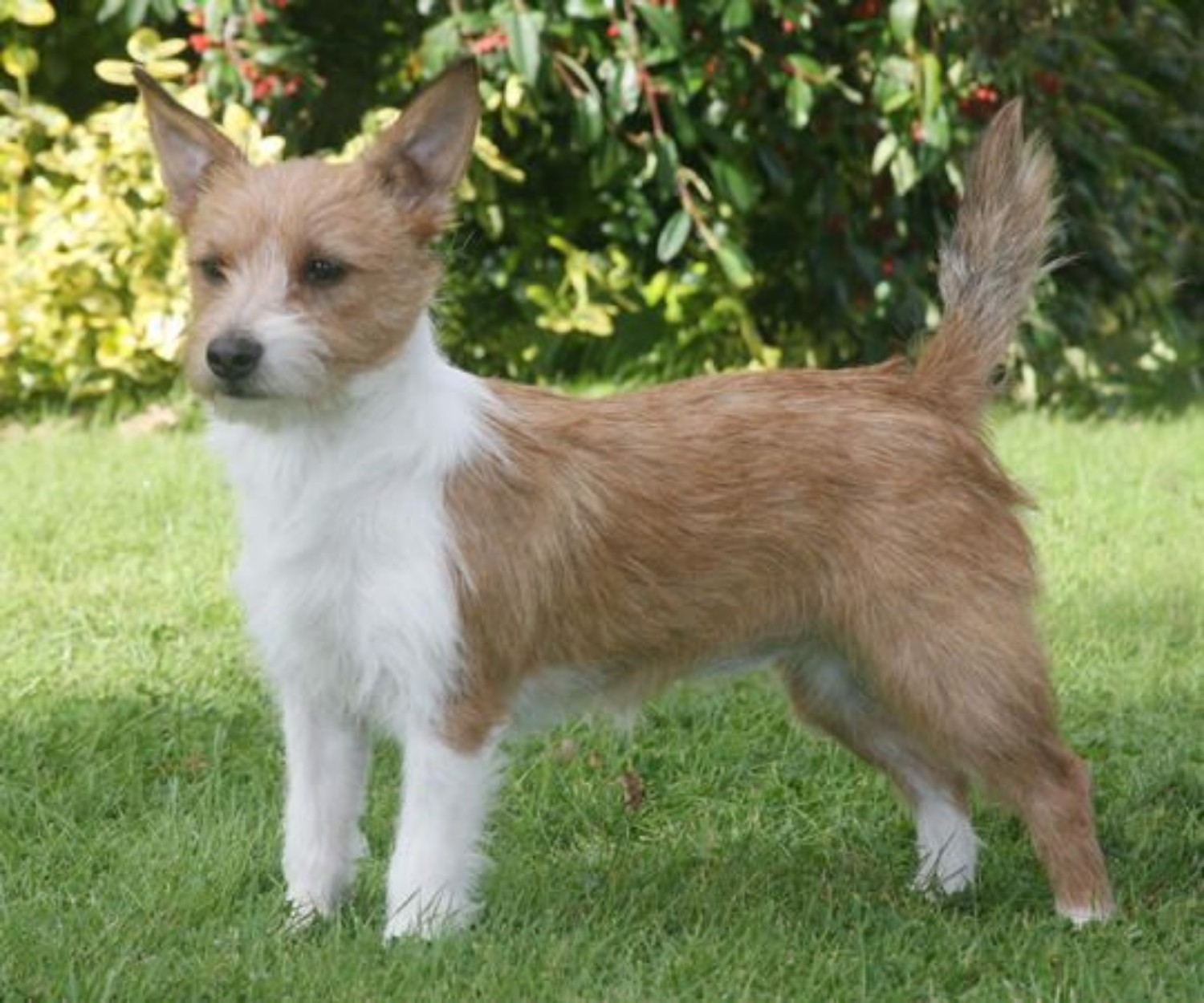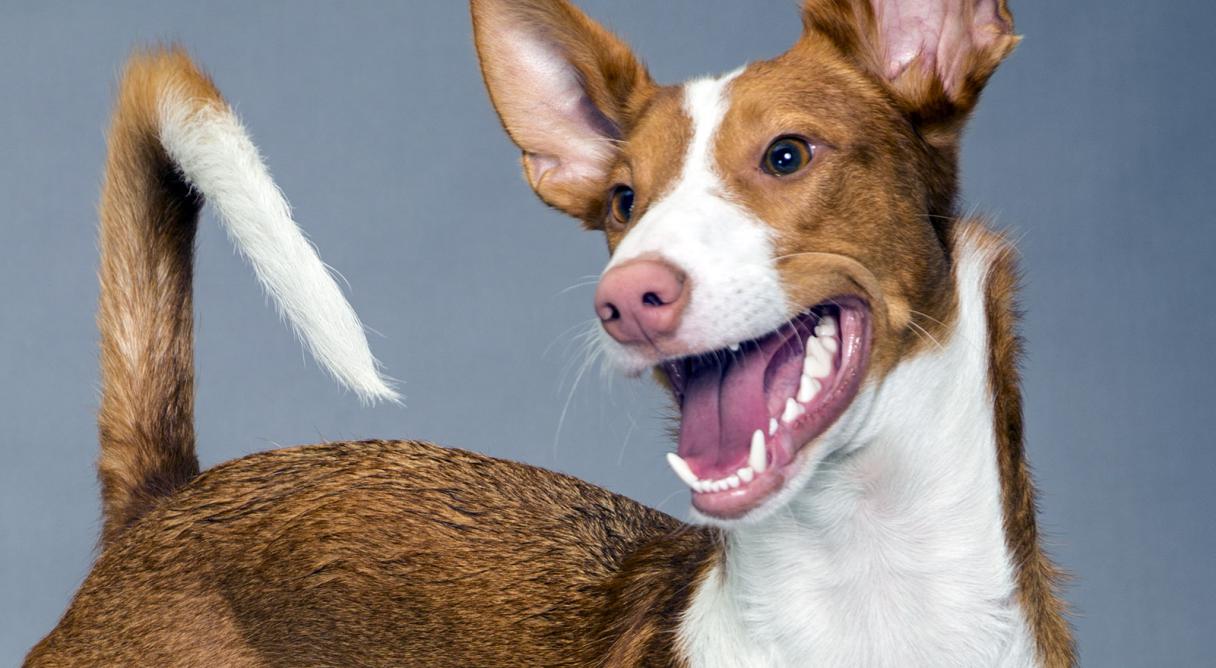

There are prominent superciliary arches and a barely perceptible frontal furrow. The skull is relatively flat between the ears, with a prominent occipital bone. The planes of the skull and muzzle diverge. The head is a lean, well chiseled, broad based wedge when viewed either from the top or in profile. They are a very lively and intelligent breed and make excellent watch dogs and companions as well as outstanding hunters.

The breed is endowed with an acute sense of smell, sharp vision and keen hearing, and they use all of these senses when hunting. In all sizes, the depth of the chest is one-half the height at the withers. The Grande and Medio are nearly square in proportion, and the Pequeno is somewhat rectangular, with the body length from prosternum to point of buttocks approximately 20 percent greater than the height at the withers.
PORTUGUESE PODENGO LARGE FREE
It is a breed that is free from exaggeration in all respects, with a wedge-shaped head, prick ears and a sickle-shaped tail. The Portuguese Podengo comes in three sizes: Grande, Medio and Pequeno (large, medium and small), and two coat varieties, smooth coated and wire coated. The Portuguese Podengo was recognized by the United Kennel Club July 1, 2006. Rogers.Ĥ) Encyclopedia Phoeniciana by Salim George Khalaf. It is also a good vermin exterminator and was probably kept on board explorer ships after King Alfonso Henrique's defeat of the Moors.ġ) Phoenicians: Lebanon's Epic Heritage by Sanford Holst, leading expert on the Phoenician people.Ģ) Golden Age of the Moor by Ivan Van Sertima.ģ) Nature Knows No Color-Line by J. The Pequeno was also developed for flushing rabbits from cover. Its hunting style includes catlike stalking and, similar to the Ibizan Hound it often jumps above the prey before landing on or near it to flush it out of dense brush, rock crevices or burrows. The Medio was developed for rabbit chasing, flushing, hunting and retrieval. The Grande is now very rare in its home country.

It will exhaust and hold down the prey and await the hunter's gun. The Grande was developed for deer and wild boar hunting. The Portuguese Podengo was developed in three size varieties and two coat types, each suited to different climates, terrain, type of prey and hunting style. When the Moorish (North African) soldiers and their people invaded and occupied Iberia (Spain, Portugal and France) for 400 years (from the early 8th century AD - to the mid- 12th Century AD*) they probably brought their own version of primitive dogs with them, thus influencing and defining the Iberian breeds such as the Podengo in Portugal and Podengo Galego in Spain. Goods were also moved via river transport from the southern Iberian trading cities and stored safely on the island of Ibiza, which likely resulted in the distribution of the dogs in those areas as well. It is entirely possible that the Phoenicians brought these valuable hunting dogs with them, both for trading and for their own use. The Phoenicians traded and traveled extensively in the land between their famous city of Gadir (Cadiz) in Iberia and Cornwall in England (where they obtained the valuable tin needed to make bronze).

This is evidenced by artifacts found under the Lisbon Cathedral. These traders reached the Port of Gaul (Portugal) in the 700's BC. The probable origin of the Portuguese Podengo is from unspecialized, primitive hunting dogs that were obtained and distributed by Phoenician traders during their circumnavigation of Africa in 600 BC. The goals and purposes of this breed standard include: to furnish guidelines for breeders who wish to maintain the quality of their breed and to improve it to advance this breed to a state of similarity throughout the world and to act as a guide for judges.īreeders and judges have the responsibility to avoid any conditions or exaggerations that are detrimental to the health, welfare, essence and soundness of this breed, and must take the responsibility to see that these are not perpetuated.Īny departure from the following should be considered a fault, and the seriousness with which the fault should be regarded should be in exact proportion to its degree and its effect upon the health and welfare of the dog and on the dog’s ability to perform its traditional work. Toggle Search Search UKC Website Go ▼ Show Menu ▼


 0 kommentar(er)
0 kommentar(er)
